 BC Wood’s 22nd Annual Global Buyers Mission (GBM) opened in Whistler, BC on Friday morning, with Premier David Eby declaring the tradeshow floor open and underscoring the value-added sector’s critical role in British Columbia’s economy and its importance to international markets. …Nearly 600 participants attended this year’s gathering, including specifiers, government representatives, and international buyers from across Asia and beyond. BC Wood CEO Brian Hawrysh welcomed the attendees… and Board chairperson Kelly Marciniw of Zirnhelt Timber Frames, introduced the Honourable Premier of British Columbia, David Eby. …Eby emphasizing the importance of BC’s international buyers, pointing to his recent experience at Expo 2025 Osaka. …At the same time, he acknowledged the dual challenges of natural and man-made disruptions, from wildfires and the mountain pine beetle to softwood lumber duties.
BC Wood’s 22nd Annual Global Buyers Mission (GBM) opened in Whistler, BC on Friday morning, with Premier David Eby declaring the tradeshow floor open and underscoring the value-added sector’s critical role in British Columbia’s economy and its importance to international markets. …Nearly 600 participants attended this year’s gathering, including specifiers, government representatives, and international buyers from across Asia and beyond. BC Wood CEO Brian Hawrysh welcomed the attendees… and Board chairperson Kelly Marciniw of Zirnhelt Timber Frames, introduced the Honourable Premier of British Columbia, David Eby. …Eby emphasizing the importance of BC’s international buyers, pointing to his recent experience at Expo 2025 Osaka. …At the same time, he acknowledged the dual challenges of natural and man-made disruptions, from wildfires and the mountain pine beetle to softwood lumber duties.
“Our friends and allies in the United States, who remain friends and allies, but are under the leadership of an individual who somehow sees affordable BC timber products as a threat to the United States, at a time when the government is simultaneously recognizing a housing crisis in the United States and a need to improve affordability for people,” he said. He argued that Canada and the US have an opportunity to reset their relationship, suggesting that the $8 billion currently held in a tariff account could be used “to promote wood products across North America for a net win for everybody.”…Eby also outlined steps the provincial government is taking to support the industry, including a pause on stumpage payments. …”There are so many opportunities for us right now, and they are matched, unfortunately, by threats. But we will be successful as a group if we push together in ensuring we’re expanding those markets.”
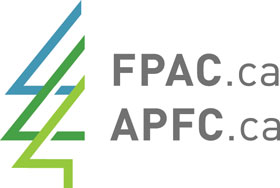 Ottawa — Forest Products Association of Canada (FPAC) welcomes the federal government’s announcement of new measures to support trade-exposed Canadian businesses and employees and to enable economic transformation. The measures announced today — ranging from the Strategic Response Fund to procurement reforms, tariff-response financing, workforce supports, and biofuels incentives — if well executed, can provide hope for the future for Canada’s forest sector and its 200,000 employees. In addition to the measures announced today, FPAC continues to call on the federal government to extend Clean Investment Tax Credits (ITCs) to include biomass for heat and electricity generation as part of Budget 2025. Introducing the biomass ITCs will create new jobs, improve energy security, lower carbon emissions, and help reduce wildfire risks. …“While a negotiated agreement on softwood lumber is the sector’s number one priority, today’s announcement is about trying to create stability as we modernize and innovate for the future,” said FPAC President and CEO Derek Nighbor.
Ottawa — Forest Products Association of Canada (FPAC) welcomes the federal government’s announcement of new measures to support trade-exposed Canadian businesses and employees and to enable economic transformation. The measures announced today — ranging from the Strategic Response Fund to procurement reforms, tariff-response financing, workforce supports, and biofuels incentives — if well executed, can provide hope for the future for Canada’s forest sector and its 200,000 employees. In addition to the measures announced today, FPAC continues to call on the federal government to extend Clean Investment Tax Credits (ITCs) to include biomass for heat and electricity generation as part of Budget 2025. Introducing the biomass ITCs will create new jobs, improve energy security, lower carbon emissions, and help reduce wildfire risks. …“While a negotiated agreement on softwood lumber is the sector’s number one priority, today’s announcement is about trying to create stability as we modernize and innovate for the future,” said FPAC President and CEO Derek Nighbor.






 WENDAKE, QC
WENDAKE, QC CORNER BROOK, Newfoundland — Kruger is going to resume operations in Corner Brook on Monday. The pulp mill shut down after the province instituted a province-wide fire ban in light of the wildfires and a high forest fire index. Their forestry operations resumed about ten days ago. In preparation for the restart, the company is actively rebuilding its wood inventory. The Deer Lake hydro plant will gradually resume operations starting today, gradually increasing until Tuesday. That will result in higher water flows and rising water levels in Deer Lake and the Humber River, both of which are currently at low levels. Kruger also noted that it is still waiting on a formal response to its diversification plan on the long-term sustainability of the operation. That proposal calls for financial involvement from the provincial government.
CORNER BROOK, Newfoundland — Kruger is going to resume operations in Corner Brook on Monday. The pulp mill shut down after the province instituted a province-wide fire ban in light of the wildfires and a high forest fire index. Their forestry operations resumed about ten days ago. In preparation for the restart, the company is actively rebuilding its wood inventory. The Deer Lake hydro plant will gradually resume operations starting today, gradually increasing until Tuesday. That will result in higher water flows and rising water levels in Deer Lake and the Humber River, both of which are currently at low levels. Kruger also noted that it is still waiting on a formal response to its diversification plan on the long-term sustainability of the operation. That proposal calls for financial involvement from the provincial government. 
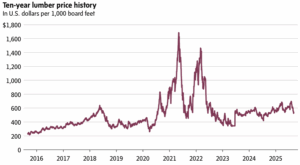 A “normal” annual softwood lumber price cycle sees prices dropping from Labour Day until early in the new year when buying starts again for the spring construction season. We are also expecting three interest rate cuts this year from the US Federal Reserve. With lower mortgage rates expected, will we see increasing demand for lumber? …The short term outlook for lumber prices continues to see weakness with price projections as low as US$450 per thousand board feet until the spring construction season. Looking into 2026 and 2027, prices are expected to recover to the mid-US$500 to low-US$600 per thousand board feet range. Ongoing duties, the upcoming court rulings on tariffs and the protracted housing shortage will all impact the price of lumber over the next two years. [to access the full story, a Globe & Mail subscription is required]
A “normal” annual softwood lumber price cycle sees prices dropping from Labour Day until early in the new year when buying starts again for the spring construction season. We are also expecting three interest rate cuts this year from the US Federal Reserve. With lower mortgage rates expected, will we see increasing demand for lumber? …The short term outlook for lumber prices continues to see weakness with price projections as low as US$450 per thousand board feet until the spring construction season. Looking into 2026 and 2027, prices are expected to recover to the mid-US$500 to low-US$600 per thousand board feet range. Ongoing duties, the upcoming court rulings on tariffs and the protracted housing shortage will all impact the price of lumber over the next two years. [to access the full story, a Globe & Mail subscription is required]
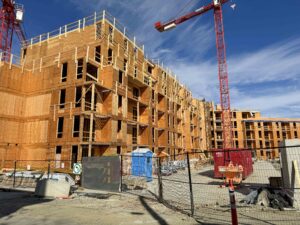 The Canada Mortgage and Housing Corporation (CMHC) released its
The Canada Mortgage and Housing Corporation (CMHC) released its 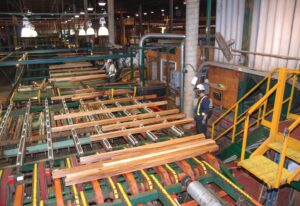 Falling lumber prices are sounding an alarm on Wall Street about potential problems on Main Street. Wood markets have been whipsawed of late by trade uncertainty and a deteriorating housing market. Futures have dropped 23% since hitting a three-year high at the beginning of August and ended Friday at $535 per thousand board feet. The price drop might have been greater—but two of North America’s biggest sawyers said last week that they would curtail output, slowing the decline. Crashing wood prices are troubling because they have been a reliable leading indicator on the direction of the housing market as well as broader economic activity. …Analysts and traders say there will have to be further cuts to ease the glut of wood. That might not be a problem, given how higher duties have pushed up Canadian sawmills’ break-even prices while demand wanes. “We anticipate further closures or curtailments,” said Truist Securities analyst Michael Roxland. [to access the full story a WSJ subscription is require]
Falling lumber prices are sounding an alarm on Wall Street about potential problems on Main Street. Wood markets have been whipsawed of late by trade uncertainty and a deteriorating housing market. Futures have dropped 23% since hitting a three-year high at the beginning of August and ended Friday at $535 per thousand board feet. The price drop might have been greater—but two of North America’s biggest sawyers said last week that they would curtail output, slowing the decline. Crashing wood prices are troubling because they have been a reliable leading indicator on the direction of the housing market as well as broader economic activity. …Analysts and traders say there will have to be further cuts to ease the glut of wood. That might not be a problem, given how higher duties have pushed up Canadian sawmills’ break-even prices while demand wanes. “We anticipate further closures or curtailments,” said Truist Securities analyst Michael Roxland. [to access the full story a WSJ subscription is require]

 In the September newsletter, you’ll find these stories and more:
In the September newsletter, you’ll find these stories and more:
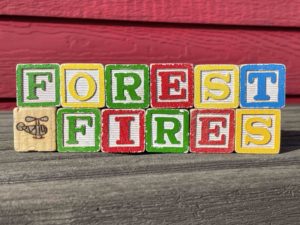

 As severe drought conditions continue to affect river levels in the Thompson Okanagan region, fish-population protection orders will protect endangered chinook salmon in the Salmon River and Bessette Creek by temporarily restricting water use for forage crops and identified industrial purposes. The Salmon River and Bessette Creek have seen persistent low streamflows that are threatening the survival of spawning chinook populations. The fish-population protection orders will help restore water-flow levels and protect the salmon run. Effective Monday, Sept. 8, 2025, 490 surface-water and groundwater licences and transitioning groundwater users in the Salmon River and Bessette Creek watersheds within the assessed curtailment area are affected by the orders to stop using water for forage crops, which include grass for hay, alfalfa and forage corn. Irrigation of forage crops is one of the most water-intensive agricultural water uses.
As severe drought conditions continue to affect river levels in the Thompson Okanagan region, fish-population protection orders will protect endangered chinook salmon in the Salmon River and Bessette Creek by temporarily restricting water use for forage crops and identified industrial purposes. The Salmon River and Bessette Creek have seen persistent low streamflows that are threatening the survival of spawning chinook populations. The fish-population protection orders will help restore water-flow levels and protect the salmon run. Effective Monday, Sept. 8, 2025, 490 surface-water and groundwater licences and transitioning groundwater users in the Salmon River and Bessette Creek watersheds within the assessed curtailment area are affected by the orders to stop using water for forage crops, which include grass for hay, alfalfa and forage corn. Irrigation of forage crops is one of the most water-intensive agricultural water uses. 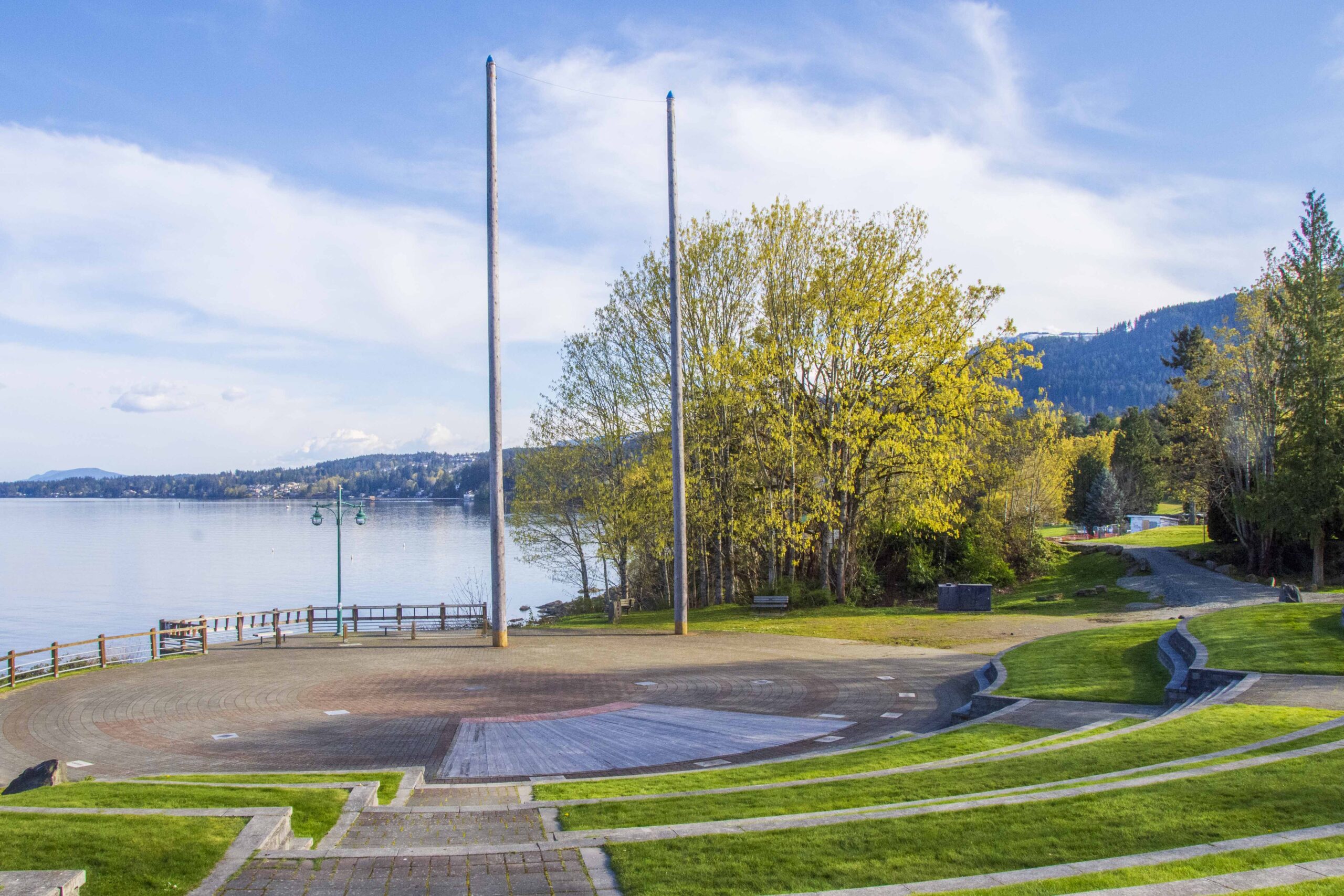 The tools of BC’s traditional industry will take centre stage in Ladysmith on Sunday, Sept. 14 for Ladysmith Loggers’ Sports. The event supports the Cops for Cancer Tour de Rock, an annual bike tour across Vancouver Island that raises funds for childhood cancer research and support programs. The loggers’ sports exhibition event will take place at the Transfer Beach amphitheatre starting at 2 p.m. …Among the upgrades this year are three massive dummy logs donated by Western Forest Products. This year’s key supporters include Spuzzum Contracting, LCU Insurance Agencies, Mosaic Forest Management and the Town of Ladysmith.
The tools of BC’s traditional industry will take centre stage in Ladysmith on Sunday, Sept. 14 for Ladysmith Loggers’ Sports. The event supports the Cops for Cancer Tour de Rock, an annual bike tour across Vancouver Island that raises funds for childhood cancer research and support programs. The loggers’ sports exhibition event will take place at the Transfer Beach amphitheatre starting at 2 p.m. …Among the upgrades this year are three massive dummy logs donated by Western Forest Products. This year’s key supporters include Spuzzum Contracting, LCU Insurance Agencies, Mosaic Forest Management and the Town of Ladysmith. A documentary addressing British Columbia’s escalating wildfire crisis and the urgent need for solutions is playing in Castlegar on Sept. 11. The film was produced by former Castlegar resident Murray Wilson. Wilson graduated from Selkirk College’s Forest Technology program in 1981 and then worked in Salmo and Nakusp before spending more than three decades in forestry across British Columbia. “My early forestry work in the Kootenays showed me the wildfire risks communities face and the solutions we need, which is at the heart of B.C. is Burning,” said Wilson.
A documentary addressing British Columbia’s escalating wildfire crisis and the urgent need for solutions is playing in Castlegar on Sept. 11. The film was produced by former Castlegar resident Murray Wilson. Wilson graduated from Selkirk College’s Forest Technology program in 1981 and then worked in Salmo and Nakusp before spending more than three decades in forestry across British Columbia. “My early forestry work in the Kootenays showed me the wildfire risks communities face and the solutions we need, which is at the heart of B.C. is Burning,” said Wilson.

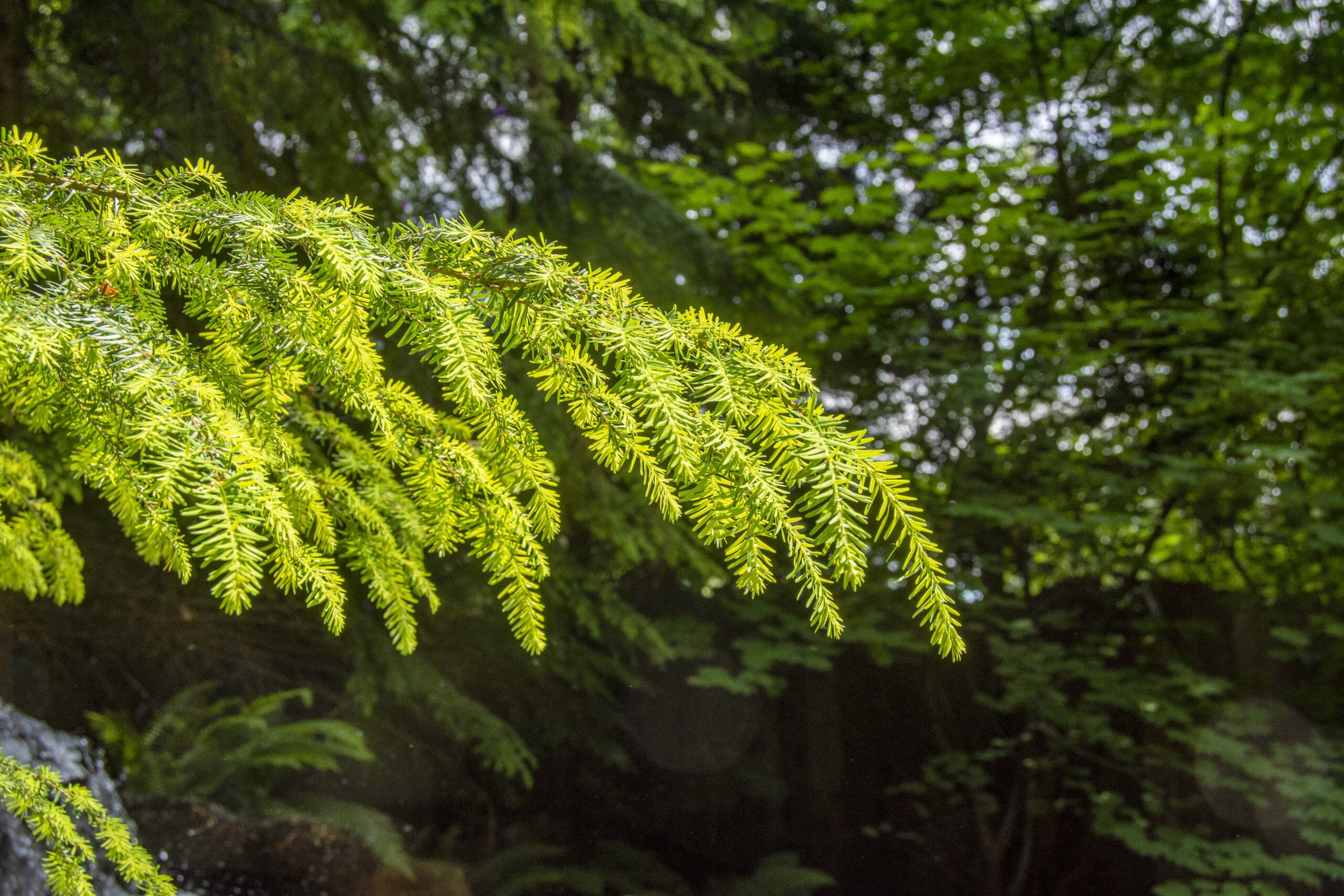 Five years after the release of the Old-Growth Strategic Review report, the BC NDP’s momentum towards a “new, holistic approach” to the management of old-growth forests has slowed almost to the point of regression. “Rather than the ‘paradigm shift’ we were promised, we’ve seen Premier Eby’s government doubling down on its prioritization of timber and industry profits over all other values,” said Eddie Petryshen, Wildsight Conservation Specialist. After its public release on September 11, 2020, the BC NDP government promised to enact all 14 recommendations made in the landmark Old-Growth Strategic Review (OGSR). The goal: to shift its focus towards ecosystem health, rather than timber. Since then, temporary logging deferrals have been put in place in high-risk old-growth stands in some parts of the province, and a 2023 Draft Biodiversity and Ecosystem Health Framework was released for public review.
Five years after the release of the Old-Growth Strategic Review report, the BC NDP’s momentum towards a “new, holistic approach” to the management of old-growth forests has slowed almost to the point of regression. “Rather than the ‘paradigm shift’ we were promised, we’ve seen Premier Eby’s government doubling down on its prioritization of timber and industry profits over all other values,” said Eddie Petryshen, Wildsight Conservation Specialist. After its public release on September 11, 2020, the BC NDP government promised to enact all 14 recommendations made in the landmark Old-Growth Strategic Review (OGSR). The goal: to shift its focus towards ecosystem health, rather than timber. Since then, temporary logging deferrals have been put in place in high-risk old-growth stands in some parts of the province, and a 2023 Draft Biodiversity and Ecosystem Health Framework was released for public review. 
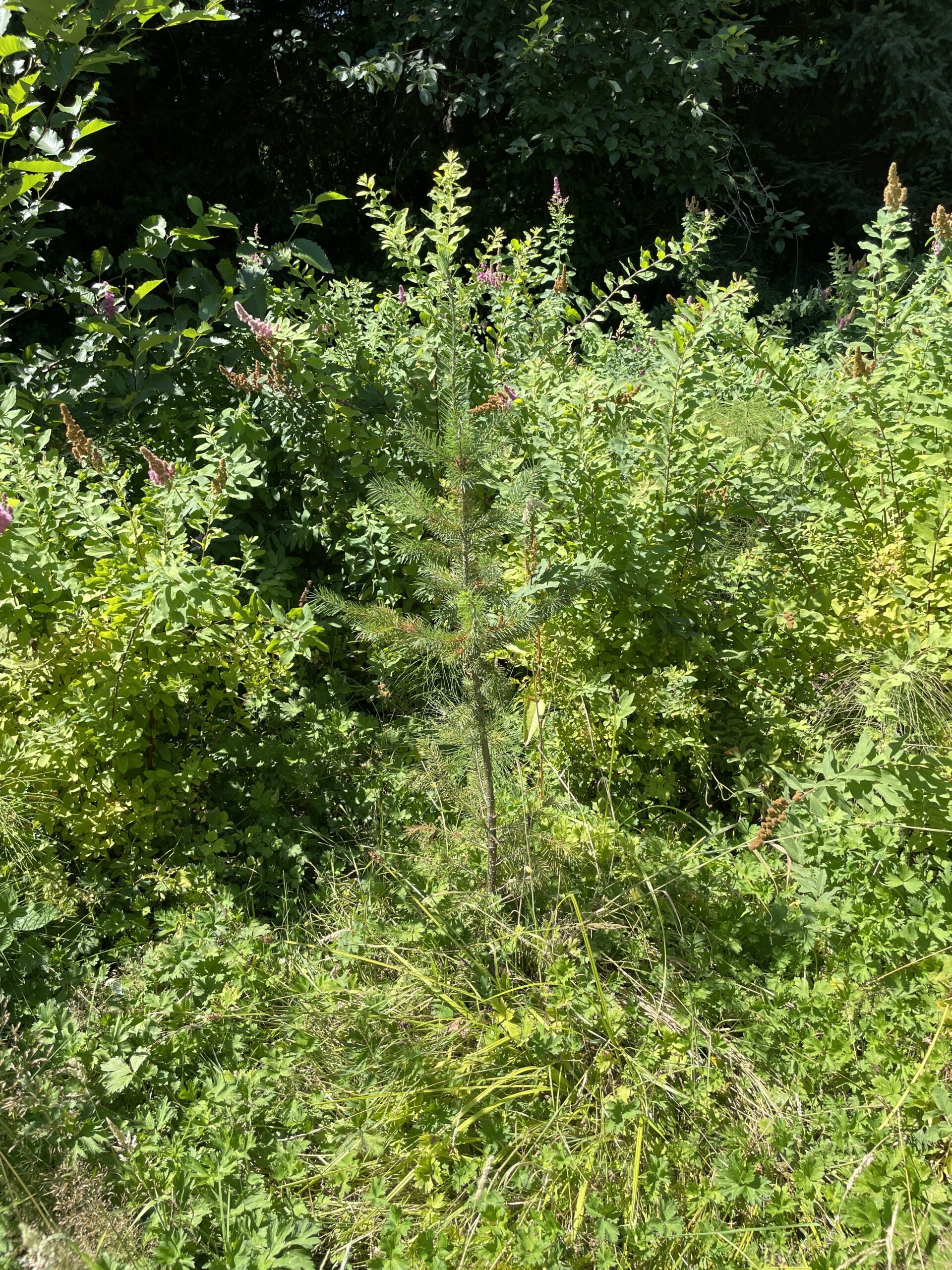 Amid calls from some First Nations and municipalities in northeastern Ontario to stop glyphosate spraying on Crown land, environmental groups are raising concerns over the herbicide’s effect on biodiversity. …Wildland fire ecologist Bob Gray said leafy deciduous trees, like aspen, are more resilient to wildfires than softwood conifers like pine and spruce. “Softwoods are highly resinous,” he said. “The foliage and bark is highly flammable. When you’ve got large contiguous areas of conifer forest, you can have large continuous forest fires.” If a timber company’s goal is to promote the growth of softwoods for harvest, at the expense of hardwoods, it can make that area more prone to wildfires. …Jocelyne Laflamme is a Ph.D. candidate at the University of British Columbia found that aspen becomes more flammable in the fall, when they lose their leaves. …In August, forest company Interfor cancelled plans to spray herbicides on trees along the north shore of Lake Huron.
Amid calls from some First Nations and municipalities in northeastern Ontario to stop glyphosate spraying on Crown land, environmental groups are raising concerns over the herbicide’s effect on biodiversity. …Wildland fire ecologist Bob Gray said leafy deciduous trees, like aspen, are more resilient to wildfires than softwood conifers like pine and spruce. “Softwoods are highly resinous,” he said. “The foliage and bark is highly flammable. When you’ve got large contiguous areas of conifer forest, you can have large continuous forest fires.” If a timber company’s goal is to promote the growth of softwoods for harvest, at the expense of hardwoods, it can make that area more prone to wildfires. …Jocelyne Laflamme is a Ph.D. candidate at the University of British Columbia found that aspen becomes more flammable in the fall, when they lose their leaves. …In August, forest company Interfor cancelled plans to spray herbicides on trees along the north shore of Lake Huron. NOVA SCOTIA — Mikmaq have begun blocking logging trucks from leaving Hunters Mountain. Madonna Bernard began the blockade on Monday afternoon when she stood in front of two logging trucks. She was then joined by other Mi’kmaq seeking to stop harvesting from the Cape Breton Highlands. …“This is not a protest, this is a protection. We’re willing to stay as long as it takes.” A large RCMP presence has gathered and more Mi’kmaq supporters are arriving. …Port Hawkesbury Paper mill manager Bevan Lock said that the supercalendered paper relies on wood coming from the highlands for a significant part of its woods fibre. He said some 70 people work for forestry and logging contractors operating in the area. “The province and RCMP have taken steps to remove the blockade and allow travel on a public road,” said Lock.
NOVA SCOTIA — Mikmaq have begun blocking logging trucks from leaving Hunters Mountain. Madonna Bernard began the blockade on Monday afternoon when she stood in front of two logging trucks. She was then joined by other Mi’kmaq seeking to stop harvesting from the Cape Breton Highlands. …“This is not a protest, this is a protection. We’re willing to stay as long as it takes.” A large RCMP presence has gathered and more Mi’kmaq supporters are arriving. …Port Hawkesbury Paper mill manager Bevan Lock said that the supercalendered paper relies on wood coming from the highlands for a significant part of its woods fibre. He said some 70 people work for forestry and logging contractors operating in the area. “The province and RCMP have taken steps to remove the blockade and allow travel on a public road,” said Lock.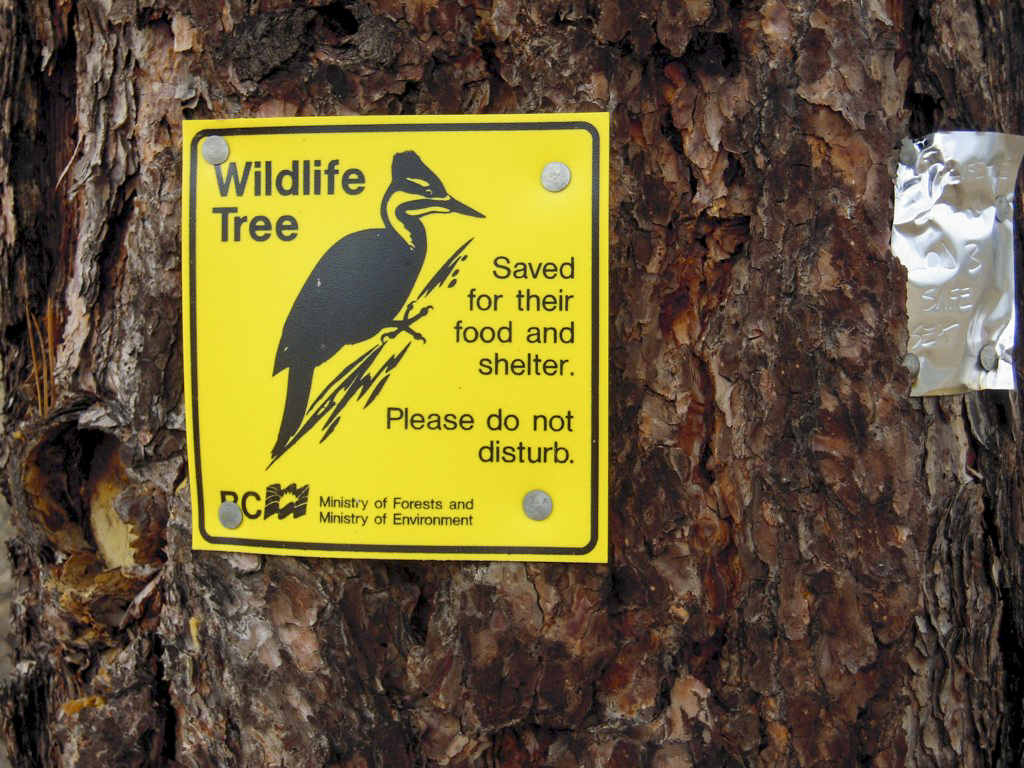 As wildfires tear through New Brunswick’s forests at record rates this year, researchers say the resulting damage is reshaping bird habitats — displacing some species while creating new opportunities for others. “With every disturbance in a forest, you have winners and losers,” says Joe Nocera, a forestry and environmental management professor at the University of New Brunswick. In this case, the winners will be woodpeckers. Wildfires, while destructive, are a natural part of forest ecosystems, said Amy-Lee Kouwenberg, an associate director at Birds Canada explained. They clear out underbrush and create habitats that support a wider range of species, boosting biodiversity in the long run. Woodpeckers thrive in burned areas, and the resulting tree cavities they leave behind are used as nesting sites that other birds rely on. …Species like the Canada warbler, wood thrush and Bicknell’s thrush — all of which depend on dense, mature or shrubby forests — are particularly vulnerable .
As wildfires tear through New Brunswick’s forests at record rates this year, researchers say the resulting damage is reshaping bird habitats — displacing some species while creating new opportunities for others. “With every disturbance in a forest, you have winners and losers,” says Joe Nocera, a forestry and environmental management professor at the University of New Brunswick. In this case, the winners will be woodpeckers. Wildfires, while destructive, are a natural part of forest ecosystems, said Amy-Lee Kouwenberg, an associate director at Birds Canada explained. They clear out underbrush and create habitats that support a wider range of species, boosting biodiversity in the long run. Woodpeckers thrive in burned areas, and the resulting tree cavities they leave behind are used as nesting sites that other birds rely on. …Species like the Canada warbler, wood thrush and Bicknell’s thrush — all of which depend on dense, mature or shrubby forests — are particularly vulnerable . 
 …Sweden, like Canada, sits atop vast boreal forests — part of the same great green belt circling the Northern Hemisphere. These forests act as planetary lungs, storing more carbon than even the Amazon. But the Swedish government’s latest forestry inquiry, En robust skogspolitik för aktivt skogsbruk, is heading in a troubling direction: grow more trees, cut them faster, and burn or export more biomass in the name of “green energy.” It sounds like a climate solution. But here’s the problem: forests are not factories. Most of the carbon in a boreal forest isn’t stored in the trees at all. It’s locked underground — in roots, fungi, humus, and delicate microbial networks built up over thousands of years. When forestry is intensified — shorter harvest cycles, heavier machines, wider clear-cuts — that underground bank of carbon is steadily drained. The trees grow back, yes, but the soil can take centuries to recover, if it recovers at all.
…Sweden, like Canada, sits atop vast boreal forests — part of the same great green belt circling the Northern Hemisphere. These forests act as planetary lungs, storing more carbon than even the Amazon. But the Swedish government’s latest forestry inquiry, En robust skogspolitik för aktivt skogsbruk, is heading in a troubling direction: grow more trees, cut them faster, and burn or export more biomass in the name of “green energy.” It sounds like a climate solution. But here’s the problem: forests are not factories. Most of the carbon in a boreal forest isn’t stored in the trees at all. It’s locked underground — in roots, fungi, humus, and delicate microbial networks built up over thousands of years. When forestry is intensified — shorter harvest cycles, heavier machines, wider clear-cuts — that underground bank of carbon is steadily drained. The trees grow back, yes, but the soil can take centuries to recover, if it recovers at all. WorkSafeBC will be holding a virtual public hearing on
WorkSafeBC will be holding a virtual public hearing on 
 The local service district of Lethbridge, N.L., is partially evacuated after a wildfire started in a bark pile and its adjacent forest outside Sexton Lumber late Sunday afternoon. The evacuation zone includes the areas of Oldford’s Hill to Southwest Bridge and Bayside Drive and Forest Drive, where the saw mill is located. Anthony Paddon Elementary in Musgravetown has been converted into a reception centre for impacted residents. In a social media post, the school announced that it will be closed to students on Monday, as it supports the efforts of emergency responders. The elementary school in Lethbridge, Hertiage Collegiate, is closed as well. In a social media post the school says more updates will be provided at 10:30 a.m. N.T. Route 233 remains impassible in both directions to all traffic. As of Sunday, three water bombers and ground crews were working the fire, and crews remained on the scene overnight to monitor conditions.
The local service district of Lethbridge, N.L., is partially evacuated after a wildfire started in a bark pile and its adjacent forest outside Sexton Lumber late Sunday afternoon. The evacuation zone includes the areas of Oldford’s Hill to Southwest Bridge and Bayside Drive and Forest Drive, where the saw mill is located. Anthony Paddon Elementary in Musgravetown has been converted into a reception centre for impacted residents. In a social media post, the school announced that it will be closed to students on Monday, as it supports the efforts of emergency responders. The elementary school in Lethbridge, Hertiage Collegiate, is closed as well. In a social media post the school says more updates will be provided at 10:30 a.m. N.T. Route 233 remains impassible in both directions to all traffic. As of Sunday, three water bombers and ground crews were working the fire, and crews remained on the scene overnight to monitor conditions.